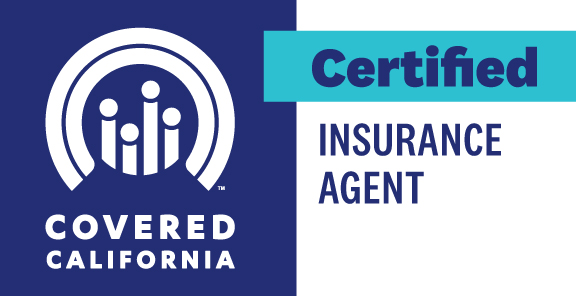How is cancer covered under ACA Obamacare, Medi Cal, Denti Cal, Medicare, Dental Plans???
Medicare Coverage of #Cancer Treatment # 11931
- Our FAQ Cancer Experimental Rx
- 15 Cancer Symptoms WebMd.com *
- Some early forms of breast cancer may not need treatment Study says Time.com *
- Visit our webpage on cancer
Contact Us - Ask Questions - Get More Information
[email protected]
By submitting the information below , you are agreeing to be contacted by Steve Shorr a Licensed Sales Agent by email, texting or Zoom to discuss Medicare or other Insurance Plans as relevant to your inquiry. This is a solicitation for Insurance
All our Health plans are Guaranteed Issue with No Pre X Clause
Quote & Subsidy #Calculation
There is No charge for our complementary services, we are paid by the Insurance Company.
- We are authorized Brokers for Dental, Vision & Covered CA get instant quotes direct and in Covered CA with subsidy calculation for:
Watch our 10 minute VIDEO
that explains everything about getting a quote
-
- Our Quote Engine Takes all the complexity out of using pencil and paper to figure out the premiums per the Obamacare/ACA rules under CFR §1.36B-3 *
More FAQ and Information on Cancer
- New 1-day surgery removes cancer and reconstructs the breast in the same operation ABC News 10.2025 *
- Chemotherapy covered under Part B and not Part D Forbes *
- Cancer patients could save over $7,000 with $2k Cap
- Your rights after a Mastectomy DOL.org *
- Revolutionizing Cancer Care Kaiser Permanante.org *
- Cancer Care Kaiser Permanante.org *
- Prior authorizations mess up cancer care ajmc *
- FAQ on cancer coverage in ACA/Obamacare plans
- Kaiser Health News – Cancer & Medical Debt
- Cancer is top health care premium increaser – Prevention is the best thing to do Kaiser Permanente.org *
- Our webpage on Medical Necessity
- ESMO Clinical Practice Guideline for the diagnosis, staging and treatment of patients with metastatic breast cancer
- Chemotherapy (Medicare.Gov)
- Mammograms
- Comparison of Treatment Costs for Breast Cancer, by Tumor Stage and Type of Service
- Cancer Care.org
- How Cancer Treatment Is Improving for People Living in Rural Areas Healthline.com 5.19.2022
- Medicare Dental Care
- Why Are So Many Young People Getting Cancer? It’s Complicated Time.com
- Mental Health Toll cancer takes Kaiser Permanante.org
- How to support an employee with cancer Kaiser Permanente.org *
- Normalizing cancer conversations in the workplace Kaiser Permante.org *
- Professor Longo’s New Book: “Fasting Cancer”
Part B & D Rx Coverage for Cancer
- Medicare covers chemotherapy if you have cancer.
- Medicare Part A (Hospital Insurance) covers it if you’re a hospital inpatient.
- Medicare Part B (Medical Insurance) covers it if you’re a hospital outpatient or get services in a doctor’s office or freestanding clinic.
- Your costs in Original Medicare
- If you get Part-B covered chemotherapy in a hospital outpatient setting, you pay a copayment.
- For chemotherapy given in a doctor’s office or freestanding clinic, you pay 20% of the Medicare-approved amount after you meet the Part B deductible. Learn More >>> Medicare.Gov
- MEDICARE DRUG COVERAGE UNDER PART A, PART B, AND PART D
- Medicare Part B (Medical Insurance) covers a limited number of outpatient prescription drugs under certain conditions.
Usually, Part B covers drugs you wouldn’t typically give to yourself, like those you get at a doctor’s office or in a hospital outpatient setting.
Here are some examples of Part B-covered drugs: Learn More>>>Medicare.Gov
- ncoa.org/ what-does-medicare-cover-for-cancer/
- Medicare Part B (Medical Insurance) covers a limited number of outpatient prescription drugs under certain conditions.
- medical news today.com/chemotherapy#coverage
- Intravenous immunoglobulin (IVIg) treatment can help you fight off infections if you have a weakened immune system or other diseases.
- Part D Rx Prescriptions
ACA Coverage – Misc.
What ACA/Obamacare plan – Metal Level has the “best” most diverse Comprehensive coverage For #breast cancer care
- Cancer costs for Americans with private health insurance rose after the ACA rollout and fell for those with Medicaid – Medi Cal Read more>>>> The Conversation.com
- ACA/Obamacare pretty much made the coverage for all plans and all companies, exactly the same. It’s a function of Metal Levels, Platinum, Gold, Silver & Bronze. Silver 73, 87 & 94 are only available if your income is low. Get a quote to see.
- There are 10 essential benefits under ACA/Obamacare. Namely:
- (H?) Cancer and other life threatening disease – clinical trials
- CA Essential Benefits
- Prescription Rx Formularies All Companies
- Options are few for poor cancer patients Many under Medi-Cal cannot get the best of care, even when it’s a matter of life or death.
- Chemotherapy medications for breast cancer include:
- Abraxane (chemical name: albumin-bound or nab-paclitaxel)
Adriamycin (chemical name: doxorubicin)
carboplatin (brand name: Paraplatin)
Cytoxan (chemical name: cyclophosphamide)
daunorubicin (brand names: Cerubidine, DaunoXome)
Doxil (chemical name: doxorubicin)
Ellence (chemical name: epirubicin)
fluorouracil (also called 5-fluorouracil or 5-FU; brand name: Adrucil)
Gemzar (chemical name: gemcitabine)
Halaven (chemical name: eribulin)
Ixempra (chemical name: ixabepilone)
methotrexate (brand names: Amethopterin, Mexate, Folex)
Mitomycin (chemical name: mutamycin)
mitoxantrone (brand name: Novantrone)
Navelbine (chemical name: vinorelbine)
Taxol (chemical name: paclitaxel)
Taxotere (chemical name: docetaxel)
thiotepa (brand name: Thioplex)
vincristine (brand names: Oncovin, Vincasar PES, Vincrex)
Xeloda (chemical name: capecitabine)
- Abraxane (chemical name: albumin-bound or nab-paclitaxel)
- Check out these comparisons of major claims by metal level.
- Should I buy extra Insurance for Cancer?
FAQ’s
- How would gum cancer be treated? Do you need dental coverage or health coverage?
Our Other Webpages, Resources & Links on Cancer
- Shop Medicare Rx Plans & Part B Cancer
- Cervical cancer treatment
- Cancer screening tests
- Cancer clinical trials
- Prostate cancer treatment
- Cancer and other life threatening disease – clinical trials
- Medical Necessity — Clinical Guidelines
- Colorectal Cancer Screening (CG024) English PDF
- USA Today – Health insurer delayed her MRI. Meanwhile, the cancer that would kill her was growing. Delays in health care are not unusual. Insurance companies control access to tests and procedures through a process known as prior authorization.
- Life Insurance – Rated Policies
- Cancer Patients Endure Debt on Top of Disease
- After a cancer diagnosis, how do you tell your kids, relatives, friends and coworkers?
“Medical Questions – Underwriting – If not in Guaranteed Issue Period?”
- CANCER
- Question I have Plan F Medi Gap and applied for Plan G to save premium. So what if the Part B Deductible is higher. It wasn’t my birthday. What RIGHT does the Insurance Company have to deny the transfer because I had an alleged pre-existing condition a nothing squamous cell skin cancer. It’s hard to find someone who has not had a skin cancer
.
- Answer 1st off, when I ask my higher ups at any of the Medi Gap Insurance Carriers about health underwriting, I get a blank stare, as most everyone gets a Medi Gap policy or change at a Guaranteed Issue date – period.
- Thus, I can’t get underwriting guidelines from anyone. Here’s an excerpt from a well known carrier, prior to ACA/Obamacare when asking health questions and pre X clauses where outlawed for under 65. Conversely, there is a mandate and only certain times one can enroll.
- There are exclusions for tons of stuff. Insurance Companies need to collect $1 to pay claims of 80 cents. It’s called MRL Medical Loss Ratio and is written into ACA/Obamcare. It was pretty much the way it was before.
- Insurance underwriters evaluate the risk and exposures of potential clients. They decide how much coverage the client should receive, how much they should pay for it, or whether even to accept the risk and insure them. Underwriting involves measuring risk exposure and determining the premium that needs to be charged to insure that risk. The function of the underwriter is to protect the company’s book of business from risks that they feel will make a loss and issue insurance policies at a premium that is commensurate with the exposure presented by a risk.
- Each insurance company has its own set of underwriting guidelines to help the underwriter determine whether or not the company should accept the risk. The information used to evaluate the risk of an applicant for insurance will depend on the type of coverage involved. For example, in underwriting automobile coverage, an individual’s driving record is critical. However, the type of automobile is actually far more critical. As part of the underwriting process for life or health insurance, medical underwriting may be used to examine the applicant’s health status (other factors may be considered as well, such as age & occupation). The factors that insurers use to classify risks are generally objective, clearly related to the likely cost of providing coverage, practical to administer, consistent with applicable law, and designed to protect the long-term viability of the insurance program.[3]
- The underwriters may decline the risk or may provide a quotation in which the premiums have been loaded (including the amount needed to generate a profit, in addition to covering expenses[4]) or in which various exclusions have been stipulated, which restrict the circumstances under which a claim would be paid. Depending on the type of insurance product (line of business), insurance companies use automated underwriting systems to encode these rules, and reduce the amount of manual work in processing quotations and policy issuance. This is especially the case for certain simpler life or personal lines (auto, homeowners) insurance. Some insurance companies, however, rely on agents to underwrite for them. This arrangement allows an insurer to operate in a market closer to its clients without having to establish a physical presence.
- Two major categories of exclusion in insurance underwriting are moral hazard and correlated losses.[5] With a moral hazard, the consequences of the customer’s actions are insured, making the customer more likely to take costly actions. For example, bedbugs are typically excluded from homeowners’ insurance to avoid paying for the consequence of recklessly bringing in a used mattress.[5] Insured events are generally those outside the control of the customer, for example (typical in life insurance) death by automobile accident, contrasted with death by suicide. Correlated losses are those that can affect a large number of customers at the same time, thus potentially bankrupting the insurance company. This is why typical homeowner’s policies cover damage from fire or falling trees (usually affecting an individual house), but not floods or earthquakes (which affect many houses at the same time).[5]wikipedia.orgInsurance_underwriting
- Here’s our webpage on the rate review process. That is, the CA Department of Insurance reviews the rates and underwriting guidelines to make sure they are actuarially sound.
- COST OF TREATMENT FOR SQUAMOUS CELL CARCINOMA OF THE HEAD AND NECK IN THE UNITED STATES
- Average per patient cost of care for SCCHN in the US was estimated to be $20,876.
- Higher costs resulted for patients that present with advanced cancers.
- The estimated cost of treating a patient with Stage IV lip SCC ($19,274) was four times that of Stage 0 lip SCC ($5,062).
- The site with the lowest cost of treatment was lip ($7,261) while the highest cost was associated with hypopharyngeal SCC ($28,584).
- The cost per patient for palliative care ranged from $2,052 for lip SCC (28% of total cost of care) to $7,172 for sinonasal SCC (30% of total cost of care).
- The lifetime cost of managing annual incident SCCHN cases was estimated to approximate $976 million.
- CONCLUSION: This study found that tumor stage and location are useful predictors of increased treatment costs. The results suggest that prevention and early detection are critical in reducing the treatment costs of SCCHN. wiley.com/
.
- CONCLUSION: This study found that tumor stage and location are useful predictors of increased treatment costs. The results suggest that prevention and early detection are critical in reducing the treatment costs of SCCHN. wiley.com/
- Question I’m living outside the USA, if I apply for a Medigap plan and am subject to underwriting, how much extra would coverage cost and what are the underwriting requirements?
- The requirements or at least the questions are in the respective insurance company applications.
- The price – premium is the same for those who enroll during a SEP or Guaranteed Enrollment Period. You can get those rates on our webpages for each company by using the site map, menu above or the link above to Blue Cross and Blue Shield affiliate sites.
- I find it very odd that there are some situations where you can be offered an underwriting-free MediGap choice upon return to the US.
- Is this only if you have or once had a policy?
- What if the provider cancels the policy when you are out of state/country (as it can do)?
- Those situations are limited to getting a Medicare Advantage Plan and then using the Trial Period to get a Medi-Gap plan or did I forget an SEP into Medi Gap?
- MAPD enrollment when returning to USA doesn’t matter on if you had a MAPD or Medi Gap policy before.
- I’m not aware that a Medi Gap carrier can cancel coverage when you move out of state or country. Residency is only required when you purchase coverage.
.
- Answer I don’t ever want to deal with underwriting because even though I’m a healthy person, the insurance companies may look at the info in the MIB and think I am not. So it sounds like I should get a regular Plan F at the get go when starting Medicare in June. Is that what you would recommend?
- How healthy are you, related to the questions on the applications above?
- Have your reviewed your MIB Medical Information Bureau File? mib.com/request_your_record
- MIB shouldn’t have anything that isn’t being asked in the applications. There’s a law somewhere that says Insurance Companies cannot deny you based only on the MIB file. They can only use it to indicate things that need to be investigated further.
- If you want the Medi Gap plan with the highest benefits Plan F and don’t want to worry about underwriting, yes. Note Plan F is no longer available if you turned 65 after January 1st 2020.
- Get Instant Medi Gap Quotes
Cancer Underwriting
Sample Agent Guide
Pre ACA




